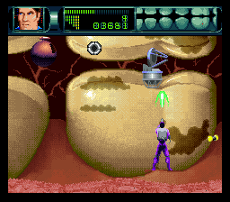(by Julia Bruntsch, Kerstin Janetta and Lorenz Harst)
One of the most popular examples for the use of gamification in healthcare is the mHealth game “ Pokémon GO ” (Figure 1), with almost 150 million active users per month. Whether catching Pokemon with the smartphone or using other gaming activities helps increasing healthy behavior or disease self-management is discussed by two students from the Health Information Management seminar taught by members of Care4 Saxony .
Figure 1: Pokémon GO – One of the most popular examples for the connection of gamification and health (https://mein-mmo.de/pokemon-go-wieder-ein-hit/ , 21.01.2019) Game-based elements can be used in non-game contexts to achieve goals beyond fun and pleasure
But how can that be achieved? It is the combination of game design, behavioral economics, motivational psychology and user experience that makes gamification effective
Since gamification has a motivational impact, it can have a positive effect on people’s behavior and lead to a performance enhancement. But why exactly are people motivated to perform a task?
The mechanism of gamification is that people do something through external incentives that they would otherwise not or only reluctantly do extrinsic motivation , i.e. external recognition and success, must be replaced by intrinsic motivation. The self-determination theory of Ryan and Deci states that by promoting autonomy, competence and togetherness, motivation can be increased internally
Figure 2: Badges, achievements and trophies (https://miro.medium.com/max/850/1*N3ArmpqtDDCyovyCIao53Q.jpeg , 31.01.2019) Badges, achievements, trophies (Figure 2) and other concepts are used to identify and reward individual behavior
One of the core elements therefore is simulation . Users can observe the consequences of certain behaviors without engaging themselves in real danger. For example, the long-term effects of smoking can be shown within hours
Figure 3: Rex Ronan – In this area, Rex Ronan must blast tar off of Jake’s teeth (https://en.wikipedia.org/wiki/Rex_Ronan:_Experimental_Surgeon#/media/File:Rex-Ronan-Experimental-Surgeon-game-screenshot.png , 31.01.2019) The smoking prevention game ‘Rex Ronan’ puts children in the role of the doctor Rex Ronan who is able to shrink and then enter the body of a smoker (Figure 3). In steering Ronan, users can observe first-handedly the negative consequences of smoking. In addition to this pictorial representation, an attractive, anti-smoking role model, and true-false-questions about the impact of smoking are parts of the game. The study showed that the anti-smoking attitude of children is reinforced and that the knowledge of specific negative effects of smoking on the body and their interest in learning more are increased
A well-designed game shall offer repetitive practice which allows for the formation of habits by playing the game numerous times without making the player feel bored fun is another core element in health-related contexts
Those applications are set in different domains including promoting healthy nutrition, safe sexual behavior, anti-smoking, injury prevention or heart attack early treatment. The game “Heart Sense” covers the last domain. The player is exposed to a variety of heart attack situations. The results show that the understanding of symptoms and the intention to make emergency calls without delay was increased
Meaningful implementation can increase engagement, influence psychological and behavioral outcomes. It therefore depends highly on a precise definition of the target group and a tailoring of the game content to the needs of the individual
Figure 4: Children and Gamification (http://blog.whooosreading.org/4-ways-bring-gamification-classroom/ , 31.01.2019) Game-based health prevention is especially an attractive channel to reach children and adolescents because repetitive skill practice and behavior rehearsal are provided with fun and entertainment (Figure 4). Besides, playing electronic games is one of the most popular activities
Gamification approaches in general can help to understand why certain treatments and medications are necessary and how they work. That will lead to more confidence and a better management of side effects
Referenzen
{1908008:F4MDM99Q};{1908008:K9MCU65H};{1908008:WYFSW83M};{1908008:K9MCU65H};{1908008:ZBRZC2P4};{1908008:LRN2H7VF};{1908008:NRMGBBXE};{1908008:RATUC4PQ};{1908008:NRMGBBXE};{1908008:W2J7PLFF};{1908008:GE6I7IHF};{1908008:GE6I7IHF};{1908008:WMQD2WKK};{1908008:GE6I7IHF};{1908008:GE6I7IHF};{1908008:H4LDI2CC};{1908008:RRQFV2TN};{1908008:WANP46N5} apa author asc no 1740
%7B%22status%22%3A%22success%22%2C%22updateneeded%22%3Afalse%2C%22instance%22%3A%22zotpress-ac4d499418eeb9892afa507d63a5e320%22%2C%22meta%22%3A%7B%22request_last%22%3A0%2C%22request_next%22%3A0%2C%22used_cache%22%3Atrue%7D%2C%22data%22%3A%5B%7B%22key%22%3A%22WYFSW83M%22%2C%22library%22%3A%7B%22id%22%3A1908008%7D%2C%22meta%22%3A%7B%22creatorSummary%22%3A%22Baranowski%20et%20al.%22%2C%22parsedDate%22%3A%222008-01%22%2C%22numChildren%22%3A0%7D%2C%22bib%22%3A%22%3Cdiv%20class%3D%5C%22csl-bib-body%5C%22%20style%3D%5C%22line-height%3A%202%3B%20padding-left%3A%201em%3B%20text-indent%3A-1em%3B%5C%22%3E%5Cn%20%20%3Cdiv%20class%3D%5C%22csl-entry%5C%22%3EBaranowski%2C%20T.%2C%20Buday%2C%20R.%2C%20Thompson%2C%20D.%20I.%2C%20%26amp%3B%20Baranowski%2C%20J.%20%282008%29.%20Playing%20for%20Real%3A%20Video%20Games%20and%20Stories%20for%20Health-Related%20Behavior%20Change.%20%3Ci%3EAmerican%20Journal%20of%20Preventive%20Medicine%3C%5C%2Fi%3E%2C%20%3Ci%3E34%3C%5C%2Fi%3E%281%29%2C%2074-82.e10.%20%3Ca%20href%3D%27https%3A%5C%2F%5C%2Fdoi.org%5C%2F10.1016%5C%2Fj.amepre.2007.09.027%27%3Ehttps%3A%5C%2F%5C%2Fdoi.org%5C%2F10.1016%5C%2Fj.amepre.2007.09.027%3C%5C%2Fa%3E%3C%5C%2Fdiv%3E%5Cn%3C%5C%2Fdiv%3E%22%2C%22data%22%3A%7B%22itemType%22%3A%22journalArticle%22%2C%22title%22%3A%22Playing%20for%20Real%3A%20Video%20Games%20and%20Stories%20for%20Health-Related%20Behavior%20Change%22%2C%22creators%22%3A%5B%7B%22creatorType%22%3A%22author%22%2C%22firstName%22%3A%22Tom%22%2C%22lastName%22%3A%22Baranowski%22%7D%2C%7B%22creatorType%22%3A%22author%22%2C%22firstName%22%3A%22Richard%22%2C%22lastName%22%3A%22Buday%22%7D%2C%7B%22creatorType%22%3A%22author%22%2C%22firstName%22%3A%22Debbe%20I.%22%2C%22lastName%22%3A%22Thompson%22%7D%2C%7B%22creatorType%22%3A%22author%22%2C%22firstName%22%3A%22Janice%22%2C%22lastName%22%3A%22Baranowski%22%7D%5D%2C%22abstractNote%22%3A%22Background%5CnVideo%20games%20provide%20extensive%20player%20involvement%20for%20large%20numbers%20of%20children%20and%20adults%2C%20and%20thereby%20provide%20a%20channel%20for%20delivering%20health%20behavior%20change%20experiences%20and%20messages%20in%20an%20engaging%20and%20entertaining%20format.%5Cn%5CnMethod%5CnTwenty-seven%20articles%20were%20identified%20on%2025%20video%20games%20that%20promoted%20health-related%20behavior%20change%20through%20December%202006.%5Cn%5CnResults%5CnMost%20of%20the%20articles%20demonstrated%20positive%20health-related%20changes%20from%20playing%20the%20video%20games.%20Variability%20in%20what%20was%20reported%20about%20the%20games%20and%20measures%20employed%20precluded%20systematically%20relating%20characteristics%20of%20the%20games%20to%20outcomes.%20Many%20of%20these%20games%20merged%20the%20immersive%2C%20attention-maintaining%20properties%20of%20stories%20and%20fantasy%2C%20the%20engaging%20properties%20of%20interactivity%2C%20and%20behavior-change%20technology%20%28e.g.%2C%20tailored%20messages%2C%20goal%20setting%29.%20Stories%20in%20video%20games%20allow%20for%20modeling%2C%20vicarious%20identifying%20experiences%2C%20and%20learning%20a%20story%5Cu2019s%20%5Cu201cmoral%2C%5Cu201d%20among%20other%20change%20possibilities.%5Cn%5CnConclusions%5CnResearch%20is%20needed%20on%20the%20optimal%20use%20of%20game-based%20stories%2C%20fantasy%2C%20interactivity%2C%20and%20behavior%20change%20technology%20in%20promoting%20health-related%20behavior%20change.%22%2C%22date%22%3A%222008-1%22%2C%22language%22%3A%22%22%2C%22DOI%22%3A%2210.1016%5C%2Fj.amepre.2007.09.027%22%2C%22ISSN%22%3A%220749-3797%22%2C%22url%22%3A%22https%3A%5C%2F%5C%2Fwww.ncbi.nlm.nih.gov%5C%2Fpmc%5C%2Farticles%5C%2FPMC2189579%5C%2F%22%2C%22collections%22%3A%5B%22NEAXSIMP%22%5D%2C%22dateModified%22%3A%222019-02-01T08%3A33%3A34Z%22%7D%7D%2C%7B%22key%22%3A%22RRQFV2TN%22%2C%22library%22%3A%7B%22id%22%3A1908008%7D%2C%22meta%22%3A%7B%22creatorSummary%22%3A%22Bureau%20of%20Labor%20Statistics%22%2C%22parsedDate%22%3A%222015%22%2C%22numChildren%22%3A0%7D%2C%22bib%22%3A%22%3Cdiv%20class%3D%5C%22csl-bib-body%5C%22%20style%3D%5C%22line-height%3A%202%3B%20padding-left%3A%201em%3B%20text-indent%3A-1em%3B%5C%22%3E%5Cn%20%20%3Cdiv%20class%3D%5C%22csl-entry%5C%22%3EBureau%20of%20Labor%20Statistics.%20%282015%29.%20%3Ci%3EAmerican%20Time%20Use%20Survey%3A%20Charts%20by%20Topic%3A%20Leisure%20and%20sports%20activities%3C%5C%2Fi%3E.%20%3Ca%20href%3D%27https%3A%5C%2F%5C%2Fwww.bls.gov%5C%2Ftus%5C%2Fcharts%5C%2Fleisure.htm%27%3Ehttps%3A%5C%2F%5C%2Fwww.bls.gov%5C%2Ftus%5C%2Fcharts%5C%2Fleisure.htm%3C%5C%2Fa%3E%3C%5C%2Fdiv%3E%5Cn%3C%5C%2Fdiv%3E%22%2C%22data%22%3A%7B%22itemType%22%3A%22webpage%22%2C%22title%22%3A%22American%20Time%20Use%20Survey%3A%20Charts%20by%20Topic%3A%20Leisure%20and%20sports%20activities%22%2C%22creators%22%3A%5B%7B%22creatorType%22%3A%22author%22%2C%22firstName%22%3A%22%22%2C%22lastName%22%3A%22Bureau%20of%20Labor%20Statistics%22%7D%5D%2C%22abstractNote%22%3A%22%22%2C%22date%22%3A%222015%22%2C%22url%22%3A%22https%3A%5C%2F%5C%2Fwww.bls.gov%5C%2Ftus%5C%2Fcharts%5C%2Fleisure.htm%22%2C%22language%22%3A%22%22%2C%22collections%22%3A%5B%22NEAXSIMP%22%5D%2C%22dateModified%22%3A%222019-02-01T08%3A30%3A26Z%22%7D%7D%2C%7B%22key%22%3A%22RATUC4PQ%22%2C%22library%22%3A%7B%22id%22%3A1908008%7D%2C%22meta%22%3A%7B%22creatorSummary%22%3A%22Chomutare%20et%20al.%22%2C%22parsedDate%22%3A%222016%22%2C%22numChildren%22%3A0%7D%2C%22bib%22%3A%22%3Cdiv%20class%3D%5C%22csl-bib-body%5C%22%20style%3D%5C%22line-height%3A%202%3B%20padding-left%3A%201em%3B%20text-indent%3A-1em%3B%5C%22%3E%5Cn%20%20%3Cdiv%20class%3D%5C%22csl-entry%5C%22%3EChomutare%2C%20T.%2C%20Johansen%2C%20S.-G.%2C%20%26%23xC5%3Brsand%2C%20E.%2C%20%26amp%3B%20Hartvigsen%2C%20G.%20%282016%29.%20Play%20and%20Learn%3A%20Developing%20a%20Social%20Game%20for%20Children%20with%20Diabetes.%20%3Ci%3EStudies%20in%20Health%20Technology%20and%20Informatics%3C%5C%2Fi%3E%2C%20%3Ci%3E226%3C%5C%2Fi%3E%2C%2055%26%23x2013%3B58.%3C%5C%2Fdiv%3E%5Cn%3C%5C%2Fdiv%3E%22%2C%22data%22%3A%7B%22itemType%22%3A%22journalArticle%22%2C%22title%22%3A%22Play%20and%20Learn%3A%20Developing%20a%20Social%20Game%20for%20Children%20with%20Diabetes%22%2C%22creators%22%3A%5B%7B%22creatorType%22%3A%22author%22%2C%22firstName%22%3A%22Taridzo%22%2C%22lastName%22%3A%22Chomutare%22%7D%2C%7B%22creatorType%22%3A%22author%22%2C%22firstName%22%3A%22Svein-Gunnar%22%2C%22lastName%22%3A%22Johansen%22%7D%2C%7B%22creatorType%22%3A%22author%22%2C%22firstName%22%3A%22Eirik%22%2C%22lastName%22%3A%22%5Cu00c5rsand%22%7D%2C%7B%22creatorType%22%3A%22author%22%2C%22firstName%22%3A%22Gunnar%22%2C%22lastName%22%3A%22Hartvigsen%22%7D%5D%2C%22abstractNote%22%3A%22While%20serious%20games%20in%20healthcare%20have%20gained%20much%20attention%20in%20recent%20years%2C%20the%20pedagogical%2C%20social%20or%20behavioural%20frameworks%20tied%20to%20the%20game%20elements%20are%20still%20poorly%20understood.%20We%20report%20the%20prototyping%20effort%20as%20work-in-progress%20for%20a%20serious%20social%20gaming%20framework%20for%20children%20with%20diabetes.%20Motivation%20theories%20were%20combined%20with%20child%20education%20literature%20to%20evaluate%20potential%20elements%20of%20the%20framework.%20Based%20on%20the%20evaluation%2C%20we%20designed%20cooperation%2C%20social%20comparison%20and%20focus%20on%20positive%20achievements%20as%20core%20game%20elements%2C%20and%20limited%20the%20extent%20of%20competition.%20Examining%20the%20theoretical%20foundations%20that%20underpin%20different%20elements%20of%20serious%20games%20promises%20a%20greater%20understanding%20of%20effective%20gaming%20techniques%20for%20healthcare.%22%2C%22date%22%3A%222016%22%2C%22language%22%3A%22eng%22%2C%22DOI%22%3A%22%22%2C%22ISSN%22%3A%220926-9630%22%2C%22url%22%3A%22%22%2C%22collections%22%3A%5B%22NEAXSIMP%22%5D%2C%22dateModified%22%3A%222019-02-01T08%3A34%3A53Z%22%7D%7D%2C%7B%22key%22%3A%22K9MCU65H%22%2C%22library%22%3A%7B%22id%22%3A1908008%7D%2C%22meta%22%3A%7B%22creatorSummary%22%3A%22Croon%20et%20al.%22%2C%22parsedDate%22%3A%222018-06%22%2C%22numChildren%22%3A0%7D%2C%22bib%22%3A%22%3Cdiv%20class%3D%5C%22csl-bib-body%5C%22%20style%3D%5C%22line-height%3A%202%3B%20padding-left%3A%201em%3B%20text-indent%3A-1em%3B%5C%22%3E%5Cn%20%20%3Cdiv%20class%3D%5C%22csl-entry%5C%22%3ECroon%2C%20R.%20D.%2C%20Wildemeersch%2C%20D.%2C%20Wille%2C%20J.%2C%20Verbert%2C%20K.%2C%20%26amp%3B%20Abeele%2C%20V.%20V.%20%282018%29.%20Gamification%20and%20Serious%20Games%20in%20a%20Healthcare%20Informatics%20Context.%20%3Ci%3E2018%20IEEE%20International%20Conference%20on%20Healthcare%20Informatics%20%28ICHI%29%3C%5C%2Fi%3E%2C%2053%26%23x2013%3B63.%20%3Ca%20href%3D%27https%3A%5C%2F%5C%2Fdoi.org%5C%2F10.1109%5C%2FICHI.2018.00014%27%3Ehttps%3A%5C%2F%5C%2Fdoi.org%5C%2F10.1109%5C%2FICHI.2018.00014%3C%5C%2Fa%3E%3C%5C%2Fdiv%3E%5Cn%3C%5C%2Fdiv%3E%22%2C%22data%22%3A%7B%22itemType%22%3A%22conferencePaper%22%2C%22title%22%3A%22Gamification%20and%20Serious%20Games%20in%20a%20Healthcare%20Informatics%20Context%22%2C%22creators%22%3A%5B%7B%22creatorType%22%3A%22author%22%2C%22firstName%22%3A%22R.%20De%22%2C%22lastName%22%3A%22Croon%22%7D%2C%7B%22creatorType%22%3A%22author%22%2C%22firstName%22%3A%22D.%22%2C%22lastName%22%3A%22Wildemeersch%22%7D%2C%7B%22creatorType%22%3A%22author%22%2C%22firstName%22%3A%22J.%22%2C%22lastName%22%3A%22Wille%22%7D%2C%7B%22creatorType%22%3A%22author%22%2C%22firstName%22%3A%22K.%22%2C%22lastName%22%3A%22Verbert%22%7D%2C%7B%22creatorType%22%3A%22author%22%2C%22firstName%22%3A%22V.%20Vanden%22%2C%22lastName%22%3A%22Abeele%22%7D%5D%2C%22abstractNote%22%3A%22The%20objective%20of%20this%20literature%20overview%20paper%20is%20to%20inform%20the%20healthcare%20informatics%20reader%2C%20who%20is%20new%20to%20gameful%20design%2C%20and%20introduce%20him%20or%20her%20into%20the%20domain%20of%20serious%20games%20and%20gamification%20for%20health.%20This%20paper%20aims%20to%20inspire%20readers%20by%20a%20lower%20level%20description%20of%20the%20opportunities%20offered%20by%20gameful%20design%20and%20apply%20it%20in%20the%20healthcare%20informatics%20domain.%20Furthermore%2C%20to%20ensure%20that%20gameful%20design%20apps%20are%20well%20implemented%2C%20designers%20and%20researchers%20of%20these%20technologies%20need%20to%20understand%20the%20mechanisms%20of%20gameful%20design%20and%20tailor%20gamification%20mechanics%20accordingly.%20Based%20on%20this%20literature%20overview%2C%20we%20propose%20design%20guidelines%20researchers%20can%20use%20to%20implement%20gameful%20design%20in%20their%20healthcare%20informatics%20projects.%22%2C%22date%22%3A%22June%202018%22%2C%22proceedingsTitle%22%3A%222018%20IEEE%20International%20Conference%20on%20Healthcare%20Informatics%20%28ICHI%29%22%2C%22conferenceName%22%3A%22%22%2C%22language%22%3A%22%22%2C%22DOI%22%3A%2210.1109%5C%2FICHI.2018.00014%22%2C%22ISBN%22%3A%22978-1-5386-5377-7%22%2C%22url%22%3A%22doi.ieeecomputersociety.org%5C%2F10.1109%5C%2FICHI.2018.00014%22%2C%22collections%22%3A%5B%22NEAXSIMP%22%5D%2C%22dateModified%22%3A%222019-02-01T08%3A17%3A32Z%22%7D%7D%2C%7B%22key%22%3A%22H4LDI2CC%22%2C%22library%22%3A%7B%22id%22%3A1908008%7D%2C%22meta%22%3A%7B%22creatorSummary%22%3A%22DeShazo%20et%20al.%22%2C%22parsedDate%22%3A%222010-10%22%2C%22numChildren%22%3A0%7D%2C%22bib%22%3A%22%3Cdiv%20class%3D%5C%22csl-bib-body%5C%22%20style%3D%5C%22line-height%3A%202%3B%20padding-left%3A%201em%3B%20text-indent%3A-1em%3B%5C%22%3E%5Cn%20%20%3Cdiv%20class%3D%5C%22csl-entry%5C%22%3EDeShazo%2C%20J.%2C%20Harris%2C%20L.%2C%20%26amp%3B%20Pratt%2C%20W.%20%282010%29.%20Effective%20intervention%20or%20child%26%23x2019%3Bs%20play%3F%20A%20review%20of%20video%20games%20for%20diabetes%20education.%20%3Ci%3EDiabetes%20Technology%20%26amp%3B%20Therapeutics%3C%5C%2Fi%3E%2C%20%3Ci%3E12%3C%5C%2Fi%3E%2810%29%2C%20815%26%23x2013%3B822.%20%3Ca%20href%3D%27https%3A%5C%2F%5C%2Fdoi.org%5C%2F10.1089%5C%2Fdia.2010.0030%27%3Ehttps%3A%5C%2F%5C%2Fdoi.org%5C%2F10.1089%5C%2Fdia.2010.0030%3C%5C%2Fa%3E%3C%5C%2Fdiv%3E%5Cn%3C%5C%2Fdiv%3E%22%2C%22data%22%3A%7B%22itemType%22%3A%22journalArticle%22%2C%22title%22%3A%22Effective%20intervention%20or%20child%27s%20play%3F%20A%20review%20of%20video%20games%20for%20diabetes%20education%22%2C%22creators%22%3A%5B%7B%22creatorType%22%3A%22author%22%2C%22firstName%22%3A%22Jonathan%22%2C%22lastName%22%3A%22DeShazo%22%7D%2C%7B%22creatorType%22%3A%22author%22%2C%22firstName%22%3A%22Lynne%22%2C%22lastName%22%3A%22Harris%22%7D%2C%7B%22creatorType%22%3A%22author%22%2C%22firstName%22%3A%22Wanda%22%2C%22lastName%22%3A%22Pratt%22%7D%5D%2C%22abstractNote%22%3A%22BACKGROUND%3A%20The%20purpose%20of%20this%20study%20is%20%281%29%20to%20identify%20diabetes%20education%20video%20games%20and%20pilot%20studies%20in%20the%20literature%2C%20%282%29%20to%20review%20themes%20in%20diabetes%20video%20game%20design%20and%20evaluation%2C%20and%20%283%29%20to%20evaluate%20the%20potential%20role%20of%20educational%20video%20games%20in%20diabetes%20self-management%20education.%5CnMETHODS%3A%20Studies%20were%20systematically%20identified%20for%20inclusion%20from%20Medline%2C%20Web%20of%20Science%2C%20CINAHL%2C%20EMBASE%2C%20Psychinfo%2C%20IEEE%20Xplore%2C%20and%20ACM%20Digital%20Library.%20Features%20of%20each%20video%20game%20intervention%20were%20reviewed%20and%20coded%20based%20on%20an%20existing%20taxonomy%20of%20diabetes%20interventions%20framework.%5CnRESULTS%3A%20Nine%20studies%20featuring%2011%20video%20games%20for%20diabetes%20care%20were%20identified.%20Video%20games%20for%20diabetes%20have%20typically%20targeted%20children%20with%20type%201%20diabetes%20mellitus%20and%20used%20situation%20problem-solving%20methods%20to%20teach%20diet%2C%20exercise%2C%20self-monitored%20blood%20glucose%2C%20and%20medication%20adherence.%20Evaluations%20have%20shown%20positive%20outcomes%20in%20knowledge%2C%20disease%20management%20adherence%2C%20and%20clinical%20outcomes.%5CnCONCLUSIONS%3A%20Video%20games%20for%20diabetes%20education%20show%20potential%20as%20effective%20educational%20interventions.%20Yet%20we%20found%20that%20improvements%20are%20needed%20in%20expanding%20the%20target%20audience%2C%20tailoring%20the%20intervention%2C%20and%20using%20theoretical%20frameworks.%20In%20the%20future%2C%20the%20reach%20and%20effectiveness%20of%20educational%20video%20games%20for%20diabetes%20education%20could%20be%20improved%20by%20expanding%20the%20target%20audience%20beyond%20juvenile%20type%201%20diabetes%20mellitus%2C%20the%20use%20of%20tailoring%2C%20and%20increased%20use%20of%20theoretical%20frameworks.%22%2C%22date%22%3A%22Oct%202010%22%2C%22language%22%3A%22eng%22%2C%22DOI%22%3A%2210.1089%5C%2Fdia.2010.0030%22%2C%22ISSN%22%3A%221557-8593%22%2C%22url%22%3A%22%22%2C%22collections%22%3A%5B%22NEAXSIMP%22%5D%2C%22dateModified%22%3A%222019-02-01T08%3A35%3A21Z%22%7D%7D%2C%7B%22key%22%3A%22WANP46N5%22%2C%22library%22%3A%7B%22id%22%3A1908008%7D%2C%22meta%22%3A%7B%22creatorSummary%22%3A%22Joubert%20et%20al.%22%2C%22parsedDate%22%3A%222016-02%22%2C%22numChildren%22%3A1%7D%2C%22bib%22%3A%22%3Cdiv%20class%3D%5C%22csl-bib-body%5C%22%20style%3D%5C%22line-height%3A%202%3B%20padding-left%3A%201em%3B%20text-indent%3A-1em%3B%5C%22%3E%5Cn%20%20%3Cdiv%20class%3D%5C%22csl-entry%5C%22%3EJoubert%2C%20M.%2C%20Armand%2C%20C.%2C%20Morera%2C%20J.%2C%20Tokayeva%2C%20L.%2C%20Guillaume%2C%20A.%2C%20%26amp%3B%20Reznik%2C%20Y.%20%282016%29.%20Impact%20of%20a%20Serious%20Videogame%20Designed%20for%20Flexible%20Insulin%20Therapy%20on%20the%20Knowledge%20and%20Behaviors%20of%20Children%20with%20Type%201%20Diabetes%3A%20The%20LUDIDIAB%20Pilot%20Study.%20%3Ci%3EDiabetes%20Technology%20%26amp%3B%20Therapeutics%3C%5C%2Fi%3E%2C%20%3Ci%3E18%3C%5C%2Fi%3E%282%29%2C%2052%26%23x2013%3B58.%20%3Ca%20href%3D%27https%3A%5C%2F%5C%2Fdoi.org%5C%2F10.1089%5C%2Fdia.2015.0227%27%3Ehttps%3A%5C%2F%5C%2Fdoi.org%5C%2F10.1089%5C%2Fdia.2015.0227%3C%5C%2Fa%3E%3C%5C%2Fdiv%3E%5Cn%3C%5C%2Fdiv%3E%22%2C%22data%22%3A%7B%22itemType%22%3A%22journalArticle%22%2C%22title%22%3A%22Impact%20of%20a%20Serious%20Videogame%20Designed%20for%20Flexible%20Insulin%20Therapy%20on%20the%20Knowledge%20and%20Behaviors%20of%20Children%20with%20Type%201%20Diabetes%3A%20The%20LUDIDIAB%20Pilot%20Study%22%2C%22creators%22%3A%5B%7B%22creatorType%22%3A%22author%22%2C%22firstName%22%3A%22Michael%22%2C%22lastName%22%3A%22Joubert%22%7D%2C%7B%22creatorType%22%3A%22author%22%2C%22firstName%22%3A%22Coline%22%2C%22lastName%22%3A%22Armand%22%7D%2C%7B%22creatorType%22%3A%22author%22%2C%22firstName%22%3A%22Julia%22%2C%22lastName%22%3A%22Morera%22%7D%2C%7B%22creatorType%22%3A%22author%22%2C%22firstName%22%3A%22Leyla%22%2C%22lastName%22%3A%22Tokayeva%22%7D%2C%7B%22creatorType%22%3A%22author%22%2C%22firstName%22%3A%22Aurore%22%2C%22lastName%22%3A%22Guillaume%22%7D%2C%7B%22creatorType%22%3A%22author%22%2C%22firstName%22%3A%22Yves%22%2C%22lastName%22%3A%22Reznik%22%7D%5D%2C%22abstractNote%22%3A%22BACKGROUND%3A%20Flexible%20%28or%20functional%29%20insulin%20therapy%20method%20is%20a%20self-management%20education%20approach%20for%20intensive%20insulin%20therapy%20in%20patients%20with%20type%201%20diabetes.%20The%20serious%20game%20%28or%20applied%20game%29%20%5C%22L%27Affaire%20Birman%5C%22%20%28%5C%22Mr.%20Birman%27s%20File%5C%22%29%20%28available%20at%20www.gluciweb.com%20%29%20was%20specifically%20designed%20as%20an%20educational%20tool%20for%20the%20flexible%20insulin%20therapy%20method.%20Its%20educational%20impact%20was%20evaluated%20in%20children%20with%20type%201%20diabetes.%5CnMATERIALS%20AND%20METHODS%3A%20This%20prospective%20multicenter%20pilot%20study%20evaluated%20the%20effect%20of%20this%20videogame%20on%20the%20therapeutic%20knowledge%20and%20behavior%20of%20children%20with%20type%201%20diabetes.%20PedCarbQuiz%20%28PCQ%29%20and%20Diabetes%20Self-Management%20Profile%20%28DSMP%29%20questionnaires%20were%20used%20before%20%28T0%29%2C%20immediately%20after%20%28T1%29%2C%20and%206%20months%20after%20%28T2%29%20the%20unstructured%20use%20of%20the%20videogame.%5CnRESULTS%3A%20The%2038%20children%20enrolled%20in%20the%20study%20were%2042%25%20boys%20and%2058%25%20girls%3B%20they%20had%20a%20mean%20age%20of%2013.7%5Cu2009%5Cu00b1%5Cu20092.1%20years%20old%2C%20a%20diabetes%20duration%20of%206.0%5Cu2009%5Cu00b1%5Cu20093.8%20years%2C%20and%20hemoglobin%20A1c%20%28HbA1c%29%20levels%20of%208.5%5Cu2009%5Cu00b1%5Cu20091.4%25%20%2869.4%5Cu2009%5Cu00b1%5Cu20099.4%5Cu2009mmol%5C%2Fmol%29.%20The%20children%20connected%20to%20the%20game%203.3%5Cu2009%5Cu00b1%5Cu20092.8%20times%20during%20this%206-month%20study.%20Their%20PCQ%20score%20increased%20from%2031.6%5Cu2009%5Cu00b1%5Cu20094.9%20at%20T0%20to%2036.0%5Cu2009%5Cu00b1%5Cu20094.0%20at%20T2%20%28P%5Cu2009%3C%5Cu20090.05%29.%20Two%20PCQ%20subscores%20also%20increased%20significantly%3A%20the%20insulin%20titration%20score%20at%20T1%20and%20T2%20and%20the%20carbohydrate%20quantification%20score%20at%20T2.%20Conversely%2C%20the%20DSMP%20score%20was%20not%20different%20at%20T0%2C%20T1%2C%20and%20T2%20%2859.1%5Cu2009%5Cu00b1%5Cu20099.9%2C%2060.2%5Cu2009%5Cu00b1%5Cu20099.8%2C%20and%2060.0%5Cu2009%5Cu00b1%5Cu200910.0%2C%20respectively%29%2C%20and%20HbA1c%20levels%20also%20remained%20stable%20throughout%20the%20study%20%288.4%5Cu2009%5Cu00b1%5Cu20091.3%25%2C%208.4%5Cu2009%5Cu00b1%5Cu20091.2%25%2C%20and%208.5%5Cu2009%5Cu00b1%5Cu20091.5%25%20at%20T0%2C%20T1%2C%20and%20T2%2C%20respectively%29.%20Subgroup%20analysis%20found%20a%20greater%20impact%20of%20the%20game%20in%20children%20with%20poor%20glycemic%20control%20and%20low%20knowledge%20at%20baseline.%20Adherence%20to%20the%20game%20was%20rather%20low%20%28half%20of%20the%20children%20played%20less%20than%202.5%20bouts%29%2C%20but%20no%20criterion%20was%20found%20to%20be%20predictive%20of%20this%20low%20attractiveness.%5CnCONCLUSIONS%3A%20Nonsupervised%20usage%20of%20the%20serious%20game%20%5C%22L%27Affaire%20Birman%5C%22%20was%20able%20to%20improve%20insulin%20titration%20and%20carbohydrate%20quantification%20in%20children%20with%20type%201%20diabetes.%22%2C%22date%22%3A%22Feb%202016%22%2C%22language%22%3A%22eng%22%2C%22DOI%22%3A%2210.1089%5C%2Fdia.2015.0227%22%2C%22ISSN%22%3A%221557-8593%22%2C%22url%22%3A%22%22%2C%22collections%22%3A%5B%22NEAXSIMP%22%5D%2C%22dateModified%22%3A%222019-02-01T08%3A35%3A35Z%22%7D%7D%2C%7B%22key%22%3A%22NRMGBBXE%22%2C%22library%22%3A%7B%22id%22%3A1908008%7D%2C%22meta%22%3A%7B%22creatorSummary%22%3A%22Kamel%20Boulos%20et%20al.%22%2C%22parsedDate%22%3A%222015-03-18%22%2C%22numChildren%22%3A1%7D%2C%22bib%22%3A%22%3Cdiv%20class%3D%5C%22csl-bib-body%5C%22%20style%3D%5C%22line-height%3A%202%3B%20padding-left%3A%201em%3B%20text-indent%3A-1em%3B%5C%22%3E%5Cn%20%20%3Cdiv%20class%3D%5C%22csl-entry%5C%22%3EKamel%20Boulos%2C%20M.%20N.%2C%20Gammon%2C%20S.%2C%20Dixon%2C%20M.%20C.%2C%20MacRury%2C%20S.%20M.%2C%20Fergusson%2C%20M.%20J.%2C%20Miranda%20Rodrigues%2C%20F.%2C%20Mourinho%20Baptista%2C%20T.%2C%20%26amp%3B%20Yang%2C%20S.%20P.%20%282015%29.%20Digital%20games%20for%20type%201%20and%20type%202%20diabetes%3A%20underpinning%20theory%20with%20three%20illustrative%20examples.%20%3Ci%3EJMIR%20Serious%20Games%3C%5C%2Fi%3E%2C%20%3Ci%3E3%3C%5C%2Fi%3E%281%29%2C%20e3.%20%3Ca%20href%3D%27https%3A%5C%2F%5C%2Fdoi.org%5C%2F10.2196%5C%2Fgames.3930%27%3Ehttps%3A%5C%2F%5C%2Fdoi.org%5C%2F10.2196%5C%2Fgames.3930%3C%5C%2Fa%3E%3C%5C%2Fdiv%3E%5Cn%3C%5C%2Fdiv%3E%22%2C%22data%22%3A%7B%22itemType%22%3A%22journalArticle%22%2C%22title%22%3A%22Digital%20games%20for%20type%201%20and%20type%202%20diabetes%3A%20underpinning%20theory%20with%20three%20illustrative%20examples%22%2C%22creators%22%3A%5B%7B%22creatorType%22%3A%22author%22%2C%22firstName%22%3A%22Maged%20N.%22%2C%22lastName%22%3A%22Kamel%20Boulos%22%7D%2C%7B%22creatorType%22%3A%22author%22%2C%22firstName%22%3A%22Shauna%22%2C%22lastName%22%3A%22Gammon%22%7D%2C%7B%22creatorType%22%3A%22author%22%2C%22firstName%22%3A%22Mavis%20C.%22%2C%22lastName%22%3A%22Dixon%22%7D%2C%7B%22creatorType%22%3A%22author%22%2C%22firstName%22%3A%22Sandra%20M.%22%2C%22lastName%22%3A%22MacRury%22%7D%2C%7B%22creatorType%22%3A%22author%22%2C%22firstName%22%3A%22Michael%20J.%22%2C%22lastName%22%3A%22Fergusson%22%7D%2C%7B%22creatorType%22%3A%22author%22%2C%22firstName%22%3A%22Francisco%22%2C%22lastName%22%3A%22Miranda%20Rodrigues%22%7D%2C%7B%22creatorType%22%3A%22author%22%2C%22firstName%22%3A%22Telmo%22%2C%22lastName%22%3A%22Mourinho%20Baptista%22%7D%2C%7B%22creatorType%22%3A%22author%22%2C%22firstName%22%3A%22Stephen%20P.%22%2C%22lastName%22%3A%22Yang%22%7D%5D%2C%22abstractNote%22%3A%22Digital%20games%20are%20an%20important%20class%20of%20eHealth%20interventions%20in%20diabetes%2C%20made%20possible%20by%20the%20Internet%20and%20a%20good%20range%20of%20affordable%20mobile%20devices%20%28eg%2C%20mobile%20phones%20and%20tablets%29%20available%20to%20consumers%20these%20days.%20Gamifying%20disease%20management%20can%20help%20children%2C%20adolescents%2C%20and%20adults%20with%20diabetes%20to%20better%20cope%20with%20their%20lifelong%20condition.%20Gamification%20and%20social%20in-game%20components%20are%20used%20to%20motivate%20players%5C%2Fpatients%20and%20positively%20change%20their%20behavior%20and%20lifestyle.%20In%20this%20paper%2C%20we%20start%20by%20presenting%20the%20main%20challenges%20facing%20people%20with%20diabetes-children%5C%2Fadolescents%20and%20adults-from%20a%20clinical%20perspective%2C%20followed%20by%20three%20short%20illustrative%20examples%20of%20mobile%20and%20desktop%20game%20apps%20and%20platforms%20designed%20by%20Ayogo%20Health%2C%20Inc.%20%28Vancouver%2C%20BC%2C%20Canada%29%20for%20type%201%20diabetes%20%28one%20example%29%20and%20type%202%20diabetes%20%28two%20examples%29.%20The%20games%20target%20different%20age%20groups%20with%20different%20needs-children%20with%20type%201%20diabetes%20versus%20adults%20with%20type%202%20diabetes.%20The%20paper%20is%20not%20meant%20to%20be%20an%20exhaustive%20review%20of%20all%20digital%20game%20offerings%20available%20for%20people%20with%20type%201%20and%20type%202%20diabetes%2C%20but%20rather%20to%20serve%20as%20a%20taster%20of%20a%20few%20of%20the%20game%20genres%20on%20offer%20today%20for%20both%20types%20of%20diabetes%2C%20with%20a%20brief%20discussion%20of%20%281%29%20some%20of%20the%20underpinning%20psychological%20mechanisms%20of%20gamified%20digital%20interventions%20and%20platforms%20as%20self-management%20adherence%20tools%2C%20and%20more%2C%20in%20diabetes%2C%20and%20%282%29%20some%20of%20the%20hypothesized%20potential%20benefits%20that%20might%20be%20gained%20from%20their%20routine%20use%20by%20people%20with%20diabetes.%20More%20research%20evidence%20from%20full-scale%20evaluation%20studies%20is%20needed%20and%20expected%20in%20the%20near%20future%20that%20will%20quantify%2C%20qualify%2C%20and%20establish%20the%20evidence%20base%20concerning%20this%20gamification%20potential%2C%20such%20as%20what%20works%20in%20each%20age%20group%5C%2Fpatient%20type%2C%20what%20does%20not%2C%20and%20under%20which%20settings%20and%20criteria.%22%2C%22date%22%3A%22Mar%2018%2C%202015%22%2C%22language%22%3A%22eng%22%2C%22DOI%22%3A%2210.2196%5C%2Fgames.3930%22%2C%22ISSN%22%3A%222291-9279%22%2C%22url%22%3A%22%22%2C%22collections%22%3A%5B%22NEAXSIMP%22%5D%2C%22dateModified%22%3A%222019-02-01T08%3A34%3A30Z%22%7D%7D%2C%7B%22key%22%3A%22WMQD2WKK%22%2C%22library%22%3A%7B%22id%22%3A1908008%7D%2C%22meta%22%3A%7B%22creatorSummary%22%3A%22Kempf%20and%20Martin%22%2C%22parsedDate%22%3A%222013-12-10%22%2C%22numChildren%22%3A1%7D%2C%22bib%22%3A%22%3Cdiv%20class%3D%5C%22csl-bib-body%5C%22%20style%3D%5C%22line-height%3A%202%3B%20padding-left%3A%201em%3B%20text-indent%3A-1em%3B%5C%22%3E%5Cn%20%20%3Cdiv%20class%3D%5C%22csl-entry%5C%22%3EKempf%2C%20K.%2C%20%26amp%3B%20Martin%2C%20S.%20%282013%29.%20Autonomous%20exercise%20game%20use%20improves%20metabolic%20control%20and%20quality%20of%20life%20in%20type%202%20diabetes%20patients%20-%20a%20randomized%20controlled%20trial.%20%3Ci%3EBMC%20Endocrine%20Disorders%3C%5C%2Fi%3E%2C%20%3Ci%3E13%3C%5C%2Fi%3E%2C%2057.%20%3Ca%20href%3D%27https%3A%5C%2F%5C%2Fdoi.org%5C%2F10.1186%5C%2F1472-6823-13-57%27%3Ehttps%3A%5C%2F%5C%2Fdoi.org%5C%2F10.1186%5C%2F1472-6823-13-57%3C%5C%2Fa%3E%3C%5C%2Fdiv%3E%5Cn%3C%5C%2Fdiv%3E%22%2C%22data%22%3A%7B%22itemType%22%3A%22journalArticle%22%2C%22title%22%3A%22Autonomous%20exercise%20game%20use%20improves%20metabolic%20control%20and%20quality%20of%20life%20in%20type%202%20diabetes%20patients%20-%20a%20randomized%20controlled%20trial%22%2C%22creators%22%3A%5B%7B%22creatorType%22%3A%22author%22%2C%22firstName%22%3A%22Kerstin%22%2C%22lastName%22%3A%22Kempf%22%7D%2C%7B%22creatorType%22%3A%22author%22%2C%22firstName%22%3A%22Stephan%22%2C%22lastName%22%3A%22Martin%22%7D%5D%2C%22abstractNote%22%3A%22BACKGROUND%3A%20Lifestyle%20intervention%20in%20type%202%20diabetes%20mellitus%20%28T2DM%29%20is%20effective%20but%20needs%20a%20special%20local%20setting%20and%20is%20costly.%20Therefore%2C%20in%20a%20randomized-controlled%20trial%20we%20tested%20the%20hypothesis%20that%20the%20autonomous%20use%20of%20the%20interactive%20exercise%20game%20Wii%20Fit%20Plus%20over%20a%20period%20of%2012%5Cu00a0weeks%20improves%20metabolic%20control%2C%20with%20HbA1c%20reduction%20as%20the%20primary%20outcome%2C%20and%20weight%20loss%2C%20reduction%20of%20cardiometabolic%20risk%20factors%2C%20physical%20activity%20and%20quality%20of%20life%20%28secondary%20outcomes%29%20in%20T2DM%20patients.%5CnMETHODS%3A%20Participants%20%28n%5Cu2009%3D%5Cu2009220%29%20were%20randomized%20into%20an%20intervention%20and%20a%20control%20group.%20The%20intervention%20group%20was%20provided%20with%20a%20Wii%20console%2C%20a%20balance%20board%20and%20the%20exercise%20game%20Wii%20Fit%20Plus%20for%2012%5Cu00a0weeks.%20The%20control%20group%20remained%20under%20routine%20care%20and%20received%20the%20items%2012%5Cu00a0weeks%20later.%20At%20baseline%20and%20after%2012%5Cu00a0weeks%20%28and%20for%20the%20control%20group%20additionally%20after%2012%5Cu00a0weeks%20of%20intervention%29%20the%20participants%27%20health%20parameters%2C%20medication%2C%20physical%20activity%20and%20validated%20questionnaires%20for%20quality%20of%20life%20%28PAID%2C%20SF12%2C%20WHO-5%2C%20CES-D%29%20were%20requested%20and%20compared%20in%20a%20complete%20case%20analysis%20using%20the%20Mann-Whitney%20test%20and%20the%20Wilcoxon%20signed%20rank%20test.%5CnRESULTS%3A%2080%25%20of%20participants%20completed%20the%2012-week%20study.%20Patients%20in%20the%20intervention%20group%20significantly%20improved%20HbA1c%20%28from%207.1%5Cu2009%5Cu00b1%5Cu20091.3%25%20to%206.8%5Cu2009%5Cu00b1%5Cu20090.9%25%3B%20-0.3%5Cu2009%5Cu00b1%5Cu20091.1%25%3B%20p%5Cu2009%3D%5Cu20090.0002%29%20in%20comparison%20to%20the%20control%20group%20%28from%206.8%5Cu2009%5Cu00b1%5Cu20090.9%25%20to%206.7%5Cu2009%5Cu00b1%5Cu20090.7%25%3B%20-0.1%5Cu2009%5Cu00b1%5Cu20090.5%25%29%20and%20also%20significantly%20reduced%20fasting%20blood%20glucose%20%28from%20135.8%5Cu2009%5Cu00b1%5Cu200938.9%5Cu00a0mg%5C%2Fdl%20to%20126.6%5Cu2009%5Cu00b1%5Cu200936.6%5Cu00a0mg%5C%2Fdl%3B%20p%5Cu2009%3D%5Cu20090.04%29%2C%20weight%20%28from%2097.6%5Cu2009%5Cu00b1%5Cu200919.2%5Cu00a0kg%20to%2096.3%5Cu2009%5Cu00b1%5Cu200918.7%5Cu00a0kg%3B%20p%5Cu2009%3C%5Cu20090.001%29%20and%20body%20mass%20index%20%28from%2034.1%5Cu2009%5Cu00b1%5Cu20096.5%5Cu00a0kg%5C%2Fm2%20to%2033.5%5Cu2009%5Cu00b1%5Cu20096.5%5Cu00a0kg%5C%2Fm2%3B%20p%5Cu2009%3C%5Cu20090.001%29.%20Daily%20physical%20activity%20increased%20significantly%20%28p%5Cu2009%3C%5Cu20090.001%29.%20Diabetes-dependent%20impairment%2C%20mental%20health%2C%20subjective%20wellbeing%20and%20quality%20of%20life%20also%20improved%20significantly%2C%20and%20the%20number%20of%20patients%20with%20depression%20decreased.%20Similar%20improvements%20were%20seen%20in%20the%20control%20group%20after%20exercise%20game%20intervention.%5CnCONCLUSIONS%3A%20In%20this%20trial%20a%20low-threshold%20intervention%20with%20the%20interactive%20exercise%20game%20Wii%20Fit%20Plus%20was%20able%20to%20motivate%20T2DM%20patients%20to%20improve%20physical%20activity%2C%20glucometabolic%20control%20and%20quality%20of%20life.%5CnTRIAL%20REGISTRATION%3A%20ClinicalTrials.gov%20NCT01735643.%22%2C%22date%22%3A%22Dec%2010%2C%202013%22%2C%22language%22%3A%22eng%22%2C%22DOI%22%3A%2210.1186%5C%2F1472-6823-13-57%22%2C%22ISSN%22%3A%221472-6823%22%2C%22url%22%3A%22%22%2C%22collections%22%3A%5B%22NEAXSIMP%22%5D%2C%22dateModified%22%3A%222019-02-01T08%3A35%3A10Z%22%7D%7D%2C%7B%22key%22%3A%22W2J7PLFF%22%2C%22library%22%3A%7B%22id%22%3A1908008%7D%2C%22meta%22%3A%7B%22creatorSummary%22%3A%22Miller%20et%20al.%22%2C%22parsedDate%22%3A%222016%22%2C%22numChildren%22%3A1%7D%2C%22bib%22%3A%22%3Cdiv%20class%3D%5C%22csl-bib-body%5C%22%20style%3D%5C%22line-height%3A%202%3B%20padding-left%3A%201em%3B%20text-indent%3A-1em%3B%5C%22%3E%5Cn%20%20%3Cdiv%20class%3D%5C%22csl-entry%5C%22%3EMiller%2C%20A.%20S.%2C%20Cafazzo%2C%20J.%20A.%2C%20%26amp%3B%20Seto%2C%20E.%20%282016%29.%20A%20game%20plan%3A%20Gamification%20design%20principles%20in%20mHealth%20applications%20for%20chronic%20disease%20management.%20%3Ci%3EHealth%20Informatics%20Journal%3C%5C%2Fi%3E%2C%20%3Ci%3E22%3C%5C%2Fi%3E%282%29%2C%20184%26%23x2013%3B193.%20%3Ca%20href%3D%27https%3A%5C%2F%5C%2Fdoi.org%5C%2F10.1177%5C%2F1460458214537511%27%3Ehttps%3A%5C%2F%5C%2Fdoi.org%5C%2F10.1177%5C%2F1460458214537511%3C%5C%2Fa%3E%3C%5C%2Fdiv%3E%5Cn%3C%5C%2Fdiv%3E%22%2C%22data%22%3A%7B%22itemType%22%3A%22journalArticle%22%2C%22title%22%3A%22A%20game%20plan%3A%20Gamification%20design%20principles%20in%20mHealth%20applications%20for%20chronic%20disease%20management%22%2C%22creators%22%3A%5B%7B%22creatorType%22%3A%22author%22%2C%22firstName%22%3A%22Aaron%20S.%22%2C%22lastName%22%3A%22Miller%22%7D%2C%7B%22creatorType%22%3A%22author%22%2C%22firstName%22%3A%22Joseph%20A.%22%2C%22lastName%22%3A%22Cafazzo%22%7D%2C%7B%22creatorType%22%3A%22author%22%2C%22firstName%22%3A%22Emily%22%2C%22lastName%22%3A%22Seto%22%7D%5D%2C%22abstractNote%22%3A%22Effective%20chronic%20disease%20management%20is%20essential%20to%20improve%20positive%20health%20outcomes%2C%20and%20incentive%20strategies%20are%20useful%20in%20promoting%20self-care%20with%20longevity.%20Gamification%2C%20applied%20with%20mHealth%20%28mobile%20health%29%20applications%2C%20has%20the%20potential%20to%20better%20facilitate%20patient%20self-management.%20This%20review%20article%20addresses%20a%20knowledge%20gap%20around%20the%20effective%20use%20of%20gamification%20design%20principles%2C%20or%20mechanics%2C%20in%20developing%20mHealth%20applications.%20Badges%2C%20leaderboards%2C%20points%20and%20levels%2C%20challenges%20and%20quests%2C%20social%20engagement%20loops%2C%20and%20onboarding%20are%20mechanics%20that%20comprise%20gamification.%20These%20mechanics%20are%20defined%20and%20explained%20from%20a%20design%20and%20development%20perspective.%20Health%20and%20fitness%20applications%20with%20gamification%20mechanics%20include%3A%20bant%20which%20uses%20points%2C%20levels%2C%20and%20social%20engagement%2C%20mySugr%20which%20uses%20challenges%20and%20quests%2C%20RunKeeper%20which%20uses%20leaderboards%20as%20well%20as%20social%20engagement%20loops%20and%20onboarding%2C%20Fitocracy%20which%20uses%20badges%2C%20and%20Mango%20Health%2C%20which%20uses%20points%20and%20levels.%20Specific%20design%20considerations%20are%20explored%2C%20an%20example%20of%20the%20efficacy%20of%20a%20gamified%20mHealth%20implementation%20in%20facilitating%20improved%20self-management%20is%20provided%2C%20limitations%20to%20this%20work%20are%20discussed%2C%20a%20link%20between%20the%20principles%20of%20gaming%20and%20gamification%20in%20health%20and%20wellness%20technologies%20is%20provided%2C%20and%20suggestions%20for%20future%20work%20are%20made.%20We%20conclude%20that%20gamification%20could%20be%20leveraged%20in%20developing%20applications%20with%20the%20potential%20to%20better%20facilitate%20self-management%20in%20persons%20with%20chronic%20conditions.%22%2C%22date%22%3A%2206%202016%22%2C%22language%22%3A%22eng%22%2C%22DOI%22%3A%2210.1177%5C%2F1460458214537511%22%2C%22ISSN%22%3A%221741-2811%22%2C%22url%22%3A%22%22%2C%22collections%22%3A%5B%22NEAXSIMP%22%5D%2C%22dateModified%22%3A%222019-02-01T08%3A18%3A39Z%22%7D%7D%2C%7B%22key%22%3A%22GE6I7IHF%22%2C%22library%22%3A%7B%22id%22%3A1908008%7D%2C%22meta%22%3A%7B%22creatorSummary%22%3A%22Peng%20and%20Liu%22%2C%22parsedDate%22%3A%222009%22%2C%22numChildren%22%3A1%7D%2C%22bib%22%3A%22%3Cdiv%20class%3D%5C%22csl-bib-body%5C%22%20style%3D%5C%22line-height%3A%202%3B%20padding-left%3A%201em%3B%20text-indent%3A-1em%3B%5C%22%3E%5Cn%20%20%3Cdiv%20class%3D%5C%22csl-entry%5C%22%3EPeng%2C%20W.%2C%20%26amp%3B%20Liu%2C%20M.%20%282009%29.%20An%20Overview%20of%20Using%20Electronic%20Games%20for%20Health%20Purposes.%20%3Ci%3EHandbook%20of%20Research%20on%20Effective%20Electronic%20Gaming%20in%20Education%3C%5C%2Fi%3E%2C%20388%26%23x2013%3B401.%20%3Ca%20href%3D%27https%3A%5C%2F%5C%2Fdoi.org%5C%2F10.4018%5C%2F978-1-59904-808-6.ch023%27%3Ehttps%3A%5C%2F%5C%2Fdoi.org%5C%2F10.4018%5C%2F978-1-59904-808-6.ch023%3C%5C%2Fa%3E%3C%5C%2Fdiv%3E%5Cn%3C%5C%2Fdiv%3E%22%2C%22data%22%3A%7B%22itemType%22%3A%22journalArticle%22%2C%22title%22%3A%22An%20Overview%20of%20Using%20Electronic%20Games%20for%20Health%20Purposes%22%2C%22creators%22%3A%5B%7B%22creatorType%22%3A%22author%22%2C%22firstName%22%3A%22Wei%22%2C%22lastName%22%3A%22Peng%22%7D%2C%7B%22creatorType%22%3A%22author%22%2C%22firstName%22%3A%22Ming%22%2C%22lastName%22%3A%22Liu%22%7D%5D%2C%22abstractNote%22%3A%22An%20Overview%20of%20Using%20Electronic%20Games%20for%20Health%20Purposes%3A%2010.4018%5C%2F978-1-59904-808-6.ch023%3A%20This%20chapter%20aims%20to%20provide%20an%20overall%20picture%20of%20the%20applications%20of%20electronic%20games%20for%20various%20health-related%20purposes%2C%20particularly%20for%20health%22%2C%22date%22%3A%222009%22%2C%22language%22%3A%22en%22%2C%22DOI%22%3A%2210.4018%5C%2F978-1-59904-808-6.ch023%22%2C%22ISSN%22%3A%22%22%2C%22url%22%3A%22https%3A%5C%2F%5C%2Fwww.igi-global.com%5C%2Fchapter%5C%2Foverview-using-electronic-games-health%5C%2F20098%22%2C%22collections%22%3A%5B%22NEAXSIMP%22%5D%2C%22dateModified%22%3A%222019-02-01T08%3A19%3A44Z%22%7D%7D%2C%7B%22key%22%3A%22LRN2H7VF%22%2C%22library%22%3A%7B%22id%22%3A1908008%7D%2C%22meta%22%3A%7B%22creatorSummary%22%3A%22Ryan%20et%20al.%22%2C%22parsedDate%22%3A%222008-01-01%22%2C%22numChildren%22%3A1%7D%2C%22bib%22%3A%22%3Cdiv%20class%3D%5C%22csl-bib-body%5C%22%20style%3D%5C%22line-height%3A%202%3B%20padding-left%3A%201em%3B%20text-indent%3A-1em%3B%5C%22%3E%5Cn%20%20%3Cdiv%20class%3D%5C%22csl-entry%5C%22%3ERyan%2C%20R.%2C%20Patrick%2C%20H.%2C%20Deci%2C%20E.%2C%20%26amp%3B%20Williams%2C%20G.%20%282008%29.%20Facilitating%20health%20behaviour%20change%20and%20its%20maintenance%3A%20Interventions%20based%20on%20Self-Determination%20Theory.%20%3Ci%3EEuropean%20Psychologist%3C%5C%2Fi%3E%2C%202%26%23x2013%3B5.%20%3Ca%20href%3D%27https%3A%5C%2F%5C%2Fresearchbank.acu.edu.au%5C%2Ffhs_pub%5C%2F4330%27%3Ehttps%3A%5C%2F%5C%2Fresearchbank.acu.edu.au%5C%2Ffhs_pub%5C%2F4330%3C%5C%2Fa%3E%3C%5C%2Fdiv%3E%5Cn%3C%5C%2Fdiv%3E%22%2C%22data%22%3A%7B%22itemType%22%3A%22journalArticle%22%2C%22title%22%3A%22Facilitating%20health%20behaviour%20change%20and%20its%20maintenance%3A%20Interventions%20based%20on%20Self-Determination%20Theory%22%2C%22creators%22%3A%5B%7B%22creatorType%22%3A%22author%22%2C%22firstName%22%3A%22Richard%22%2C%22lastName%22%3A%22Ryan%22%7D%2C%7B%22creatorType%22%3A%22author%22%2C%22firstName%22%3A%22Heather%22%2C%22lastName%22%3A%22Patrick%22%7D%2C%7B%22creatorType%22%3A%22author%22%2C%22firstName%22%3A%22Edward%22%2C%22lastName%22%3A%22Deci%22%7D%2C%7B%22creatorType%22%3A%22author%22%2C%22firstName%22%3A%22Geoffrey%22%2C%22lastName%22%3A%22Williams%22%7D%5D%2C%22abstractNote%22%3A%22%22%2C%22date%22%3A%222008-01-01%22%2C%22language%22%3A%22%22%2C%22DOI%22%3A%22%22%2C%22ISSN%22%3A%22%22%2C%22url%22%3A%22https%3A%5C%2F%5C%2Fresearchbank.acu.edu.au%5C%2Ffhs_pub%5C%2F4330%22%2C%22collections%22%3A%5B%22NEAXSIMP%22%5D%2C%22dateModified%22%3A%222019-02-01T08%3A17%3A55Z%22%7D%7D%2C%7B%22key%22%3A%22ZBRZC2P4%22%2C%22library%22%3A%7B%22id%22%3A1908008%7D%2C%22meta%22%3A%7B%22creatorSummary%22%3A%22Tate%20et%20al.%22%2C%22parsedDate%22%3A%222015-01%22%2C%22numChildren%22%3A2%7D%2C%22bib%22%3A%22%3Cdiv%20class%3D%5C%22csl-bib-body%5C%22%20style%3D%5C%22line-height%3A%202%3B%20padding-left%3A%201em%3B%20text-indent%3A-1em%3B%5C%22%3E%5Cn%20%20%3Cdiv%20class%3D%5C%22csl-entry%5C%22%3ETate%2C%20D.%20F.%2C%20Lyons%2C%20E.%20J.%2C%20%26amp%3B%20Valle%2C%20C.%20G.%20%282015%29.%20High-tech%20tools%20for%20exercise%20motivation%3A%20use%20and%20role%20of%20technologies%20such%20as%20the%20internet%2C%20mobile%20applications%2C%20social%20media%2C%20and%20video%20games.%20%3Ci%3EDiabetes%20Spectrum%3A%20A%20Publication%20of%20the%20American%20Diabetes%20Association%3C%5C%2Fi%3E%2C%20%3Ci%3E28%3C%5C%2Fi%3E%281%29%2C%2045%26%23x2013%3B54.%20%3Ca%20href%3D%27https%3A%5C%2F%5C%2Fdoi.org%5C%2F10.2337%5C%2Fdiaspect.28.1.45%27%3Ehttps%3A%5C%2F%5C%2Fdoi.org%5C%2F10.2337%5C%2Fdiaspect.28.1.45%3C%5C%2Fa%3E%3C%5C%2Fdiv%3E%5Cn%3C%5C%2Fdiv%3E%22%2C%22data%22%3A%7B%22itemType%22%3A%22journalArticle%22%2C%22title%22%3A%22High-tech%20tools%20for%20exercise%20motivation%3A%20use%20and%20role%20of%20technologies%20such%20as%20the%20internet%2C%20mobile%20applications%2C%20social%20media%2C%20and%20video%20games%22%2C%22creators%22%3A%5B%7B%22creatorType%22%3A%22author%22%2C%22firstName%22%3A%22Deborah%20F.%22%2C%22lastName%22%3A%22Tate%22%7D%2C%7B%22creatorType%22%3A%22author%22%2C%22firstName%22%3A%22Elizabeth%20J.%22%2C%22lastName%22%3A%22Lyons%22%7D%2C%7B%22creatorType%22%3A%22author%22%2C%22firstName%22%3A%22Carmina%20G.%22%2C%22lastName%22%3A%22Valle%22%7D%5D%2C%22abstractNote%22%3A%22IN%20BRIEF%20The%20majority%20of%20patients%20with%20type%202%20diabetes%20are%20not%20active%20at%20recommended%20levels%2C%20and%20many%20do%20not%20have%20access%20to%20behavior%20change%20programs%20to%20support%20lifestyle%20change.%20Thus%2C%20tools%20and%20programs%20designed%20to%20promote%20the%20adoption%20and%20maintenance%20of%20physical%20activity%20using%20technology%20may%20be%20helpful.%20This%20article%20reviews%20the%20evidence%20regarding%20the%20use%20of%20technology%20tools%20such%20as%20the%20Internet%2C%20mobile%20applications%2C%20social%20media%2C%20and%20video%20games%20and%20provides%20suggestions%20for%20evaluating%20the%20potential%20benefit%20of%20such%20tools%20for%20behavior%20change.%22%2C%22date%22%3A%22Jan%202015%22%2C%22language%22%3A%22eng%22%2C%22DOI%22%3A%2210.2337%5C%2Fdiaspect.28.1.45%22%2C%22ISSN%22%3A%221040-9165%22%2C%22url%22%3A%22%22%2C%22collections%22%3A%5B%22NEAXSIMP%22%5D%2C%22dateModified%22%3A%222019-02-01T08%3A34%3A10Z%22%7D%7D%5D%7D
Baranowski, T., Buday, R., Thompson, D. I., & Baranowski, J. (2008). Playing for Real: Video Games and Stories for Health-Related Behavior Change.
American Journal of Preventive Medicine ,
34 (1), 74-82.e10.
https://doi.org/10.1016/j.amepre.2007.09.027
Bureau of Labor Statistics. (2015).
American Time Use Survey: Charts by Topic: Leisure and sports activities .
https://www.bls.gov/tus/charts/leisure.htm
Chomutare, T., Johansen, S.-G., Årsand, E., & Hartvigsen, G. (2016). Play and Learn: Developing a Social Game for Children with Diabetes. Studies in Health Technology and Informatics , 226 , 55–58.
Croon, R. D., Wildemeersch, D., Wille, J., Verbert, K., & Abeele, V. V. (2018). Gamification and Serious Games in a Healthcare Informatics Context.
2018 IEEE International Conference on Healthcare Informatics (ICHI) , 53–63.
https://doi.org/10.1109/ICHI.2018.00014
DeShazo, J., Harris, L., & Pratt, W. (2010). Effective intervention or child’s play? A review of video games for diabetes education.
Diabetes Technology & Therapeutics ,
12 (10), 815–822.
https://doi.org/10.1089/dia.2010.0030
Joubert, M., Armand, C., Morera, J., Tokayeva, L., Guillaume, A., & Reznik, Y. (2016). Impact of a Serious Videogame Designed for Flexible Insulin Therapy on the Knowledge and Behaviors of Children with Type 1 Diabetes: The LUDIDIAB Pilot Study.
Diabetes Technology & Therapeutics ,
18 (2), 52–58.
https://doi.org/10.1089/dia.2015.0227
Kamel Boulos, M. N., Gammon, S., Dixon, M. C., MacRury, S. M., Fergusson, M. J., Miranda Rodrigues, F., Mourinho Baptista, T., & Yang, S. P. (2015). Digital games for type 1 and type 2 diabetes: underpinning theory with three illustrative examples.
JMIR Serious Games ,
3 (1), e3.
https://doi.org/10.2196/games.3930
Kempf, K., & Martin, S. (2013). Autonomous exercise game use improves metabolic control and quality of life in type 2 diabetes patients - a randomized controlled trial.
BMC Endocrine Disorders ,
13 , 57.
https://doi.org/10.1186/1472-6823-13-57
Miller, A. S., Cafazzo, J. A., & Seto, E. (2016). A game plan: Gamification design principles in mHealth applications for chronic disease management.
Health Informatics Journal ,
22 (2), 184–193.
https://doi.org/10.1177/1460458214537511
Peng, W., & Liu, M. (2009). An Overview of Using Electronic Games for Health Purposes.
Handbook of Research on Effective Electronic Gaming in Education , 388–401.
https://doi.org/10.4018/978-1-59904-808-6.ch023
Ryan, R., Patrick, H., Deci, E., & Williams, G. (2008). Facilitating health behaviour change and its maintenance: Interventions based on Self-Determination Theory.
European Psychologist , 2–5.
https://researchbank.acu.edu.au/fhs_pub/4330
Tate, D. F., Lyons, E. J., & Valle, C. G. (2015). High-tech tools for exercise motivation: use and role of technologies such as the internet, mobile applications, social media, and video games.
Diabetes Spectrum: A Publication of the American Diabetes Association ,
28 (1), 45–54.
https://doi.org/10.2337/diaspect.28.1.45
Ähnliche Beiträge




